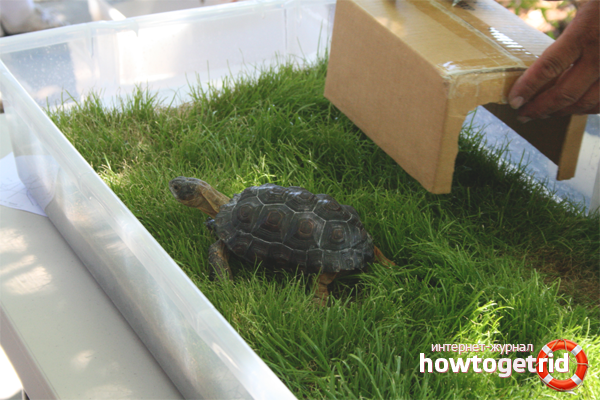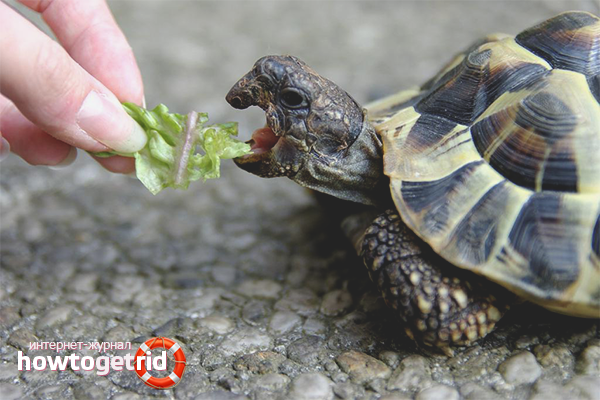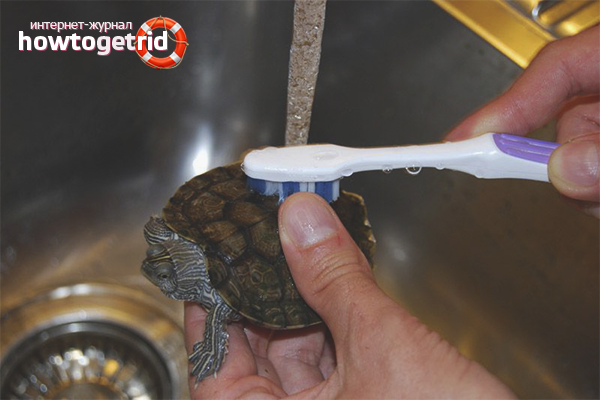The content of the article
Tortoises can be a great gift for those who want to get a pet, but be afraid for the integrity of their property. The simplicity of caring for them allows them to also be acquired for children who crave to have their animal. Turtles do not emit sharp odors and, unlike cats and dogs, do not have wool, which is especially important for those who are allergic. And the place for existence they need not so much.
How to choose a turtle for home habitat
Land turtles exist in many species. Many of them are quite large and are not suitable for keeping in an apartment or even a private house. Except in a well-equipped aviary, where there is an opportunity to hide from the cold, and organized a pond for swimming.
Steppe turtles are best suited for housing maintenance. They are also called Central Asian.They rarely grow over 20 cm, so they can be kept in groups. Such turtles in natural conditions have two periods of hibernation: summer and winter. In winter, they protect themselves from the cold, and in summer - from the sweltering heat and lack of food. But at home, these periods may shift or be completely absent, if the bug always has something to eat and the temperature suits them.
Home Improvement
Many make a big mistake when they consider that these animals need more freedom and are allowed to walk around the apartment. Cold from the floor and possible drafts often lead to the fact that animals simply catch cold. In their natural habitat, from the cold, the turtles hide, burrowing in the ground, or use the burrows of other animals. In the apartment it is impossible to do. That is why it is important to have a well-equipped terrarium.
For one pet it will be enough to have a half-meter paddock, with a side height of about 30 cm and a width of 40 cm. If there are several animals, then the width of the terrarium should be twice the size of the largest turtle. This is necessary so that pets can move around comfortably and not interfere with each other.Glass terrarium allows you to easily watch the pet, but with one transparent wall is also a good option. The rest of the board can be of painted wood or other environmentally friendly material.
The temperature in the terrarium should not be below 25 ° C, but you should not do more than 35 ° C. An ordinary incandescent lamp is suitable for heating, which is installed above the pen at a height of 25 cm from the bottom. The light from the lamp should be directed so that part of the terrarium remains less warm. So pets will be able to choose for themselves a more comfortable thermal regime. It is also necessary to equip a shelter zone where the turtle can retire. For these purposes, the usual inverted box with a cut entrance or half of a flowerpot is suitable. The size of the shelter should be such that the turtle can freely turn around in it.
The bottom of the terrarium is covered with a three-centimeter layer of coarse sand. You can use sawdust or add coarse gravel to the sand. To the side with the lamp, you need to install the drinking bowl, having drowned it well in the ground, so that when drinking, the turtle does not press down the side of the neck. A heavy, round-shaped ceramic tank with an almost flat edge is suitable as a pot. And under the lamp the water will always be warm, which is important for the health of the turtle.The same form can be put and the feeder, which is better to clean after the animals eat. So there will be more space and the terrarium will stay clean longer. Do not put the feeder under the heat source so that the greens do not dry out.
How to feed land turtles
Ordinary food, which you can feed a kitten or a puppy, for a tortoise immediately disappears. Cooked porridge or meat can cause difficult digestion, and even lead to the death of a pet with frequent use. Therefore, it is better to follow the recommendations on diet and give only natural products for this type.
The ration of the turtles should be based on greens, vegetables and some fruits. Add this list in the winter can be a special vitamin supplements, which are sold in pet stores. But dry food is bad for them. But it is worth remembering that not all plants are suitable for daily feeding of these pets, and some may even be dangerous.
For example, often medicinal herbs contain alkaloids, which have a detrimental effect on the nervous system of any animals, including turtles.Forbidden products include daffodils common in spring, euphorbia, crocus, buttercups, jasmine and home-grown delphinium, oleander, deffenbachia. From the green it is preferable to give fresh lawn grass, lettuce leaves, yellow flowers and dandelion stalks, plantain, clover, a small amount of spinach and horse sorrel.
From vegetables fit finely chopped cabbage and carrots. Land turtles are famous lovers of sweet fruits and berries, only as a percentage they should not exceed a quarter of the daily diet. Excess sweets can lead to obesity. You can offer strawberries, peaches, apricots, and so on. From fruit, you must first remove the bones, especially small ones. In winter, it is useful to give germinated grain of oats and barley, add sea kale to feed.
If hay is included in the diet, it is advisable to soak it or increase the amount of drinking water. All fruits and vegetables are thoroughly washed, and solid foods are grated. Mineral supplements are added directly to the feed. Some recommend that crushed eggshells be given to turtles as a source of calcium.But such a product can cause salmonellosis. It is better to use mineral supplements.
If there are several turtles in the terrarium, the pallet should be of such size that all pets can eat at the same time. Leftover food should be thrown away and the next time they should be offered fresh food. Vegetables and fruits should not be out of the refrigerator, but only at room temperature.
Turtles hygiene
Bathing is a favorite occupation of land turtles. The process itself brings them great pleasure. An adult pet should be bathed once a week, and a young bug can be once every three days. Keeping your pet clean helps your health.
For swimming turtles need to prepare a container with warm water. The room where hygienic baths are held should also be sufficiently heated and without drafts. Water in the bath need to pour up to two-thirds of the snail growth. You can use a soft sponge for washing, and if the pet is too dirty, then baby soap will not be harmful.
The process should not last more than ten to fifteen minutes, while the water remains warm.After swimming, the turtle must be wiped dry to avoid a cold, and released back into the terrarium. Many, right in the pen, arrange baths for their pets, where there is always bathing water. This option is suitable for a fairly large terrarium. In this case, the water should be changed at least once every three days so that it does not accumulate waste products of turtles.
Sunlight is necessary for the normal development of the turtle. Unlike humans, these animals can develop rickets even in adulthood. To prevent this from happening to your beloved pet, he needs to arrange daily sunbathing. To do this, you can place a terrarium on the windowsill, and in summer even keep turtles in an open pen on the street (if conditions allow). In winter, with a lack of solar energy and bad weather, the role of the sun can perform an ultraviolet lamp.
In its natural habitat, the tortoise grinds its claws while moving. In the terrarium, this may not happen, and the grown-up claws often prevent the pet from moving. Therefore, sometimes it is necessary to cut the claws of the bugs.To understand how much you can cut, you need to look at the claw at the light of the lamp or the sun. Only the light part is clipped, because blood vessels pass through the dark.
Caring for a land turtle is not as complicated as it may seem initially. After a time, many procedures become a habit of the owner, and the bug quickly gets used to the new environment of existence. With the right approach, a pet can live for decades.
Video: how to care for a turtle






 5 votes, on average: 4,20 out of 5
5 votes, on average: 4,20 out of 5







To send